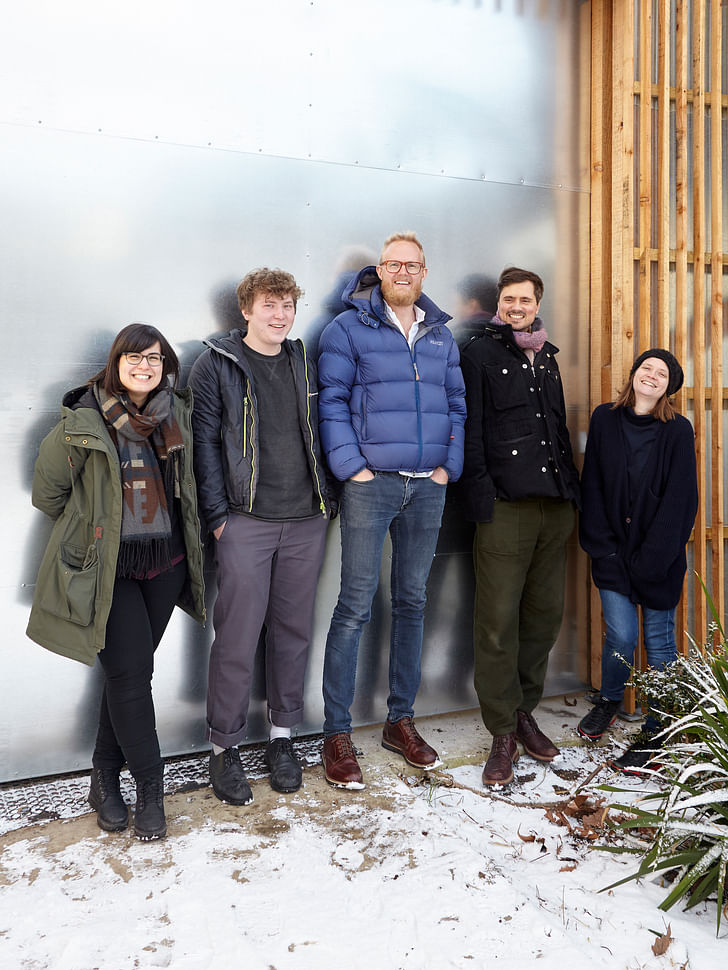

The London-based Architecture & Design studio Outpost was founded in 2016 by Robin Sjoholm and Thomas Housden. In the two years since, the studio has developed a growing portfolio of private commissions within the residential and commercial sectors as well as pursued their own self-initiated projects. They also recently won RIBA's gasholder base competition, which asked emerging architects to find creative future uses for the sub-surface circular voids left by decommissioned gasholders.
For this week's Small Studio Snapshot, we talked with the young firm about developing their own projects, their unique hand sketches, and where they'd like to end up.
How many people are in your practice?
We are 5 people and hoping to grow to about 10.
Why were you originally motivated to start your own practice? How did you guys decide to team up?
Tom and I met at school. We then took our own paths, different schools of architecture and practices. But we have remained close throughout, having collaborated over the years on competitions, and private architectural and design work outside of practice. We both very much enjoyed our varied experiences working with companies such as Project Orange, Ab Rogers Design, DSDHA, MUMA, Baynes & Mitchell Architects and Sarah Featherstone amongst others.
Our motivation to form a practice was our shared passion to develop our own design approach informed by our past experiences. We are especially interested in developing architecture that harmoniously brings together modern design with traditional building techniques and craftsmanship. For example, we are currently looking at developing a modern design for a straw bale house—a meeting of high tech and low tech, perhaps?
What hurdles have you come across?
Obviously running a business always has its challenges, but perhaps even more so in architecture. The skill set required is very diverse and it is therefore, by default, a team business that relies on people. Our aim is to be as creative as we can be within the very real constraints of budgets, time frames, and technical possibilities.
For the RIBA Gasholder Bases competition, your winning project features these great hand drawn sketches. Is hand drawing common to your projects and can you speak a bit about this choice/approach?
Yes, we do a lot of hand drawing at the early stages when things need to be kept loose. Computers can be great but you do have to be able to define a lot more detail with computers and ultimately it is much more time consuming and therefore expensive to produce renders or models. Sketches offer the opportunity to study our ideas quickly.
On your site, you mention your team pursues its own self-initiated projects, can you expand on this?
We are in the process of looking for a site to build a house out of straw bales in the UK. For us, the opportunity to develop our own ideas is important. We hope to use this project as a case study and tool for attracting more work of a similar nature. We have also developed smaller projects such as products and furniture ourselves.

Is scaling up a goal or would you like to maintain the size of your practice?
We would like to grow to a practice of between 10 – 20 people to be able to increase the varied skill set at our disposal. We would look to have a wide variety of types of people. Our 5 person office already contains a product designer and an artist. Working with skilled people is what makes our profession enjoyable.
What are the benefits of having your own practice? And staying small?
Beyond a certain size, it is very hard to know what other people are doing and be aware of the work being carried out. With 10-20 people you can produce a tremendous amount of work. We don’t have anything against bigger office set ups, but it certainly pushes an office towards more and more commercial work as it gets bigger. Our aim is to ensure we do not lose quality as we grow.
No Comments
Block this user
Are you sure you want to block this user and hide all related comments throughout the site?
Archinect
This is your first comment on Archinect. Your comment will be visible once approved.